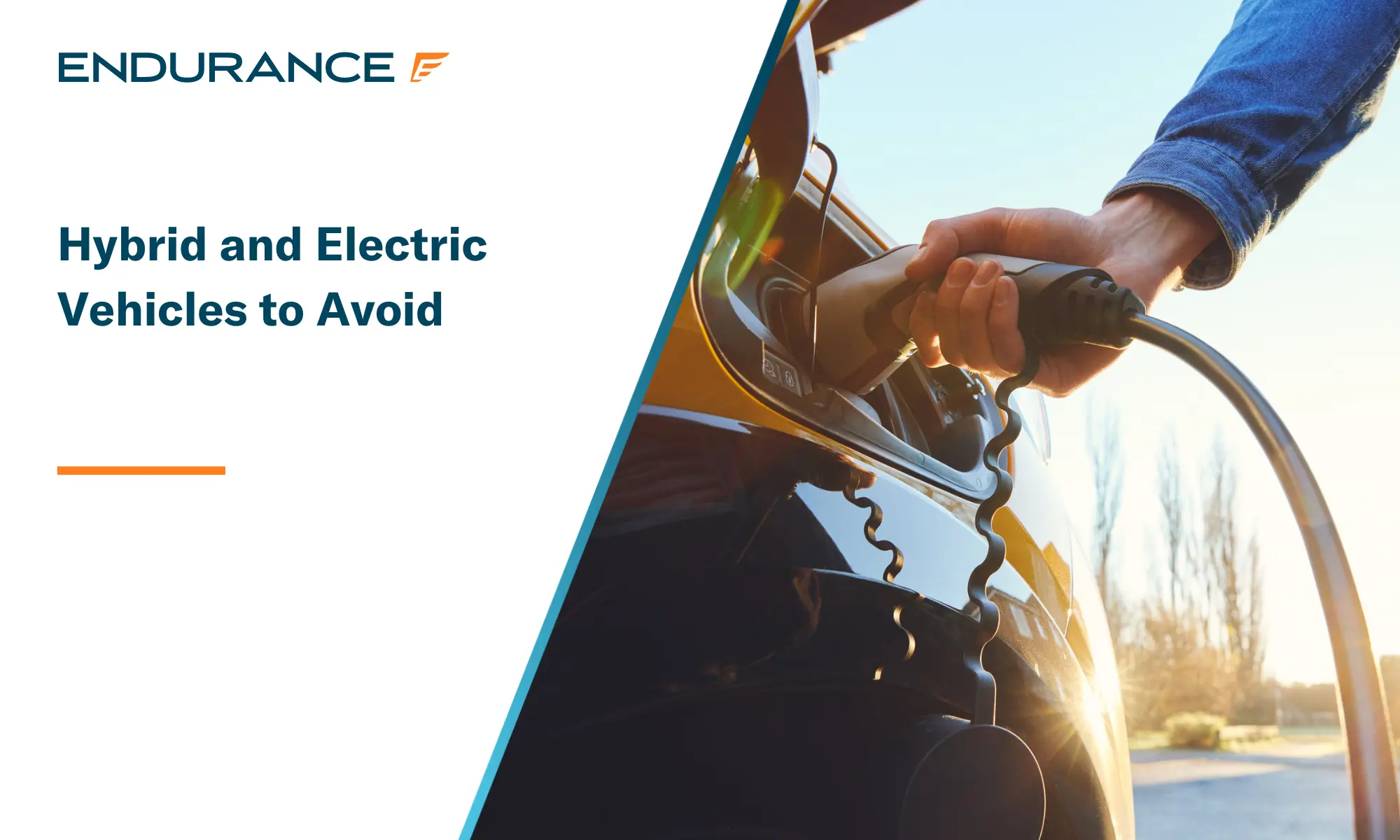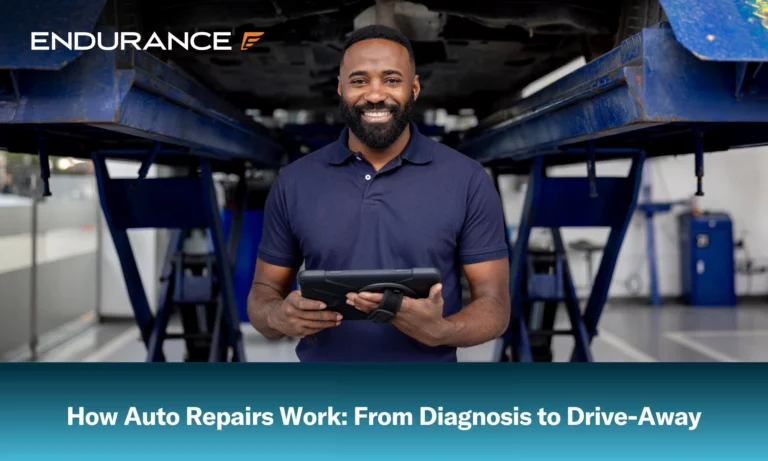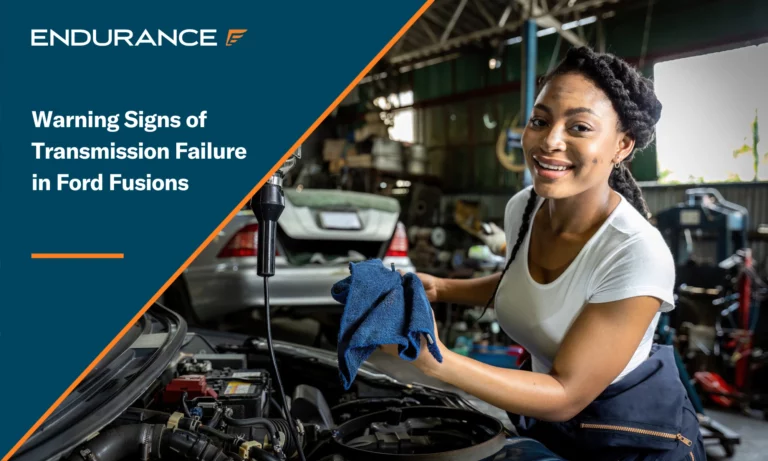Vehículos híbridos y eléctricos que conviene evitar

No estás solo si estás considerando comprar un automóvil eléctrico (un híbrido o... vehículo eléctrico). Según la Administración de Energía de Estados Unidos, es un camino que tomaron casi el 18% de compradores de autos nuevos en el tercer trimestre de 2023. Eso se traduce en más de 680.000 consumidores que buscan opciones automotrices más allá de las convencionales para ahorrar en costos de combustible y reducir el impacto ambiental. La cifra aumenta a millones cuando se analizan las ventas anualizadas.
Si bien cada vez más personas compran vehículos híbridos y eléctricos, no todos los compradores están familiarizados con la funcionalidad y las consideraciones de propiedad únicas que presentan estos vehículos. Esto es un problema menor con los híbridos porque estos vehículos aún requieren viajes a la estación de servicio y mantenimiento del motor. Sin embargo, Vehículos eléctricos Presenta un nuevo mundo de factores, como la autonomía, la carga y diferentes estándares de mantenimiento. Ya sea que esté comprando un vehículo nuevo o usado, conocer estos aspectos esenciales lo pondrá en el camino correcto.
Continúe leyendo mientras exploramos los elementos principales de los híbridos y vehículos eléctricosNo solo aprenderá sobre conceptos clave, sino que también descubrirá ejemplos de qué vehículos eléctricos debe evitar.
Términos que debes conocer
| Híbrido | Un automóvil híbrido (a veces llamado vehículo eléctrico híbrido o HEV) utiliza un motor de combustión interna y un motor eléctrico (alimentado por un paquete de baterías que se carga mediante frenado regenerativo y el motor de combustión interna para impulsar las ruedas). El sistema cambia entre las fuentes de energía automáticamente para lograr una eficiencia óptima del combustible. |
| Híbrido enchufable | Un híbrido enchufable (o vehículo eléctrico híbrido enchufable o PHEV) es un tipo de automóvil híbrido que tiene una batería más grande y avanzada que se puede cargar enchufándola a una fuente de energía eléctrica, lo que permite que el automóvil funcione únicamente con la batería eléctrica durante un rango limitado (generalmente 20 a 50 millas) antes de cambiar al modo híbrido de gasolina para viajes más largos. |
| Vehículo eléctrico | Un vehículo eléctrico (VE) es un automóvil que utiliza uno o más motores eléctricos alimentados por un paquete de baterías que se carga enchufando el vehículo a una fuente de energía eléctrica. El sistema impulsa las ruedas únicamente con energía eléctrica, sin un motor de combustión interna. A estos automóviles a veces se los denomina BEV (vehículos eléctricos de batería). |
Factores a tener en cuenta a la hora de evaluar vehículos híbridos y eléctricos
Piense en cómo ha cambiado el teléfono en la última década. Es probable que haya crecido en un hogar con un teléfono fijo. Hoy, Menos del 25% de los hogares tienen una conexión por cable a la red telefónica.Los cambios tecnológicos radicales también han afectado a la industria automovilística.
Los automóviles convencionales modernos son más avanzados que los modelos de los años 1980 y 1990, pero aún tienen en común el motor de combustión interna (ICE). Sin embargo, la tecnología híbrida ha llevado a los motores de gasolina a otro nivel de eficiencia, y los vehículos eléctricos eliminan por completo los motores alimentados con combustible. Junto con los cambios llegan nuevos términos y nuevos conceptos.
Si bien la tecnología híbrida es compleja bajo el capó, es relativamente sencilla desde el punto de vista de la usabilidad. Solo hay que llenar el tanque y conducir, confiando en un paquete de baterías y un motor eléctrico para maximizar el ahorro de combustible. Lo que más se debe tener en cuenta son los kilómetros por galón. Hay cuestiones de mantenimiento, que se analizan a continuación.
Un PHEV añade una capa de complejidad. Deberás prestar atención a la carga y a la autonomía totalmente eléctrica. Sin embargo, todavía queda el motor híbrido a gasolina al que recurrir. La ecuación de carga y autonomía cambia significativamente con un EV. Ignora estos elementos y tendrás un ladrillo sobre ruedas. Profundicemos en estas y otras consideraciones.
Autonomía y carga de la batería
Comúnmente conocida como “ansiedad por la autonomía”, algunos compradores y propietarios de vehículos eléctricos se preocupan por no tener suficiente autonomía de la bateríaEsto es un problema menor para un vehículo secundario utilizado principalmente para desplazamientos diarios y recados locales, pero puede ser un verdadero problema para un vehículo principal, especialmente para viajes más largos.
Los vehículos eléctricos más antiguos y de menor costo, como el Nissan Leaf y el Volkswagen e-Golf, ofrecen una autonomía de alrededor de 160 kilómetros por carga, mientras que los modelos más nuevos y convencionales ofrecen una capacidad de entre 400 y 480 kilómetros. Algunos ejemplos son el Hyundai Ioniq 5 y el Tesla Model Y. Los vehículos eléctricos de alta gama (como el Lucid Air y el Tesla Model S) ofrecen una autonomía de entre 640 y 800 kilómetros.
Ser propietario de un vehículo eléctrico requiere tener acceso a una solución de carga. Informe de JD Power 2022 revela que el 84% de los propietarios de vehículos eléctricos cargan sus coches en casa. Esto significa que dependen de una corriente doméstica estándar de 120 voltios (nivel 1) o de un sistema de 240 voltios (nivel 2). Los cargadores comerciales también ofrecen carga de nivel 3 (carga rápida de CC). La velocidad de carga de un vehículo eléctrico depende del nivel de carga y de la capacidad de la batería para aceptar corriente.
| Nivel de carga | Voltaje | Velocidad de carga | Ejemplos de tiempos de carga | Ubicaciones comunes |
| Nivel 1 | 120 V CA | El más lento | Vehículos eléctricos ligeros: 40-50 horas desde vacío
PHEV: 4-8 horas |
Casas |
| Nivel 2 | 240 V CA (residencial)
208 V CA (comercial) |
Más rápido que el nivel 1 | Vehículo eléctrico ligero (BEV): 4-10 horas desde vacío
PHEV: 1-4 horas |
Casas, lugares de trabajo, estaciones públicas. |
| Carga rápida de nivel 3/CC | DC (corriente continua) | Lo más rápido | Vehículo ligero BEV: 80% en 20 min-1 h
La mayoría de los PHEV: no compatibles |
Zonas de mucho tráfico, estaciones públicas |
Fuente: Departamento de Transporte de los Estados Unidos
Longevidad de la batería
La batería de alto voltaje (o batería de tracción) es un componente vital de cualquier híbrido, PHEV o EV. Y, como todas las baterías, se desgasta con el tiempo. Quizás hayas notado que tu teléfono celular o computadora portátil no se mantiene cargada tanto tiempo como antes. Los vehículos eléctricos no son diferentes.
Es importante que tengas esto en cuenta si vas a comprar un vehículo usado o si lo vas a comprar nuevo con la intención de conservarlo durante una década aproximadamente. Según el fabricante, las baterías de alto voltaje suelen tener una garantía de ocho a diez años o de 160 000 a 240 000 kilómetros. Por ejemplo, la batería de tracción de un Toyota Prius más nuevo viene con una garantía válida por diez años o 240 000 kilómetros. Algunas ediciones del Tesla Model 3 tienen una garantía de ocho años o 160 000 kilómetros, mientras que otras tienen una garantía más larga.
Con el tiempo, es necesario reemplazar la batería de tracción. Por lo tanto, comprar un Prius antiguo puede parecer una ganga, pero recibir una factura de entre 2.000 y 5.000 dólares por una batería nueva puede hacer que la oferta sea menos atractiva. Reemplazar todas o algunas celdas de alto voltaje en un vehículo eléctrico puede costar entre 10.000 y 20.000 dólares.
Eficiencia de combustible y ahorro ambiental
No es inusual ver algunos híbridos que alcanzan más de 50 MPG, 40%-50% más que sus equivalentes con motor de combustión interna. Si opta por un vehículo eléctrico, acostúmbrese a un nuevo término, MPGe (millas por galón equivalente). Los vehículos eléctricos suelen superar las 100 MPGe (un vehículo a gasolina de 30 MPG equivale a 99 MPGe). Al igual que con los vehículos convencionales, los vehículos eléctricos más pequeños son más eficientes que los más grandes.
Una vez que tenga una idea de los números, determine cómo se podrían sumar los ahorros. Esto puede ser más complejo con los vehículos eléctricos, pero calculadora en línea Puede ayudar con el proceso. Las tarifas de electricidad varían según la empresa de servicios públicos y, por lo general, el uso de un cargador comercial (como Tesla Supercharger, Electrify America o ChargePoint) cuesta aún más.
Incentivos y créditos fiscales para vehículos eléctricos
Los incentivos federales y estatales para los vehículos eléctricos son un objetivo cambiante. En lugar de enumerar descuentos y otros programas que pueden quedar obsoletos, dedique tiempo a investigar qué hay disponible en su área. Consumer Reports ofrece una práctica herramienta en líneaExisten muchos otros recursos. Recuerde que los programas federales recientes incluyen un crédito fiscal de hasta $4,000 para vehículos eléctricos usados y algunos estados ofrecen incentivos generosos.
Consideraciones sobre los costos de propiedad continua
Si bien los vehículos eléctricos tienen costos de mantenimiento más bajos que los híbridos y los automóviles convencionales, aún requieren mantenimiento. Claro, las puestas a punto y otras reparaciones relacionadas con el motor son cosas del pasado, pero los vehículos eléctricos pesan más. Por lo tanto, es probable que deba reemplazar los neumáticos antes y la suspensión puede requerir atención más frecuente. Además, cuando sea necesario realizar un servicio, es de esperar que las facturas de reparación sean más altas. Las piezas pueden ser más difíciles de encontrar y menos talleres pueden trabajar en vehículos eléctricos.
Además, dedique tiempo a obtener cotizaciones de seguros antes de comprometerse con un híbrido o un vehículo eléctrico. La tecnología más compleja y los costos de servicio más elevados generalmente significan primas más caras. Por ejemplo, Observación del mercado informa que cuesta alrededor de $3,000 al año asegurar un Tesla, 50% más que el promedio nacional para un automóvil convencional.
Modelos híbridos que hay que abordar con cautela
Si bien modelos como el Prius han ayudado a establecer la legitimidad de la tecnología híbrida, algunos ejemplos es mejor dejarlos en la entrada de la casa de alguien más. Entre ellos se incluyen:
Chevrolet Tahoe Híbrido
El Chevy Tahoe Hybrid, que se vendió entre 2008 y 2013, parecía una buena idea en teoría. Sin embargo, la combinación de un SUV grande con tecnología híbrida nunca atrajo a las masas debido a los costos iniciales más altos y al ahorro de combustible no tan bueno. Aunque el automóvil recibió críticas generalmente buenas de los propietarios, ver un "El peor vehículo que he tenido" Este comentario es motivo de preocupación.
Chevrolet Volt
El primer híbrido enchufable de Chevy (2011-2019) resultó popular y reforzó las credenciales de automóvil electrificado del fabricante de automóviles, pero este PHEV tiene un Historial de problemas eléctricosEs un problema que socava la confianza en la tecnología central del vehículo.
Chrysler Pacifica Híbrido
Combinar la capacidad de transporte de una minivan con el ahorro de combustible de un híbrido tiene sentido, pero Chrysler no logró lograr el esfuerzo. El Pacifica Hybrid tiene un historial de numerosos problemas, incluidos problemas eléctricos y problemas con el motor.El vehículo todavía está en producción.
Nissan Altima Híbrido
Nissan se sumó a la moda de los híbridos al licenciar la tecnología de Toyota y colocarla en el sedán Altima. El concepto subyacente parecía sólido, pero los consumidores preocupados por el consumo de combustible compraron el Prius. El Altima híbrido (2007-2011) nunca fue popular. Debido a su rareza, las piezas relacionadas con los híbridos pueden ser difíciles de encontrar y caras.
Los vehículos eléctricos no están a la altura de las expectativas
Los vehículos eléctricos tampoco son perfectos. A continuación, se muestran algunos que no cumplen con las expectativas.
BMW i3
Los BMW son conocidos por dos cosas: un aspecto elegante y unas características de conducción atractivas, pero el i3 no tenía ninguna de las dos. Dejando a un lado su aspecto peculiar, el costoso i3 ofrecía un rendimiento lento. Mientras tanto, su autonomía en modo eléctrico alcanzaba un máximo de 240 kilómetros (algunas ediciones no podían superar los 120 kilómetros). Un extensor de autonomía opcional (un generador a bordo alimentado con gasolina) duplicaba (en el mejor de los casos) la capacidad de autonomía del i3.
Lexus RZ
Si bien Toyota se destaca como líder en tecnología híbrida, sus esfuerzos con los vehículos eléctricos son decepcionantes. El Lexus RZ, el primer vehículo eléctrico de la división de lujo de Toyota, tiene una autonomía de 426 kilómetros, una capacidad que iguala al Chevy Bolt, un vehículo eléctrico que se vende a la mitad de precio. El RZ es el primo corporativo de lujo del Toyota Bz4X, otro vehículo eléctrico con una autonomía inferior (405 kilómetros).
Hoja de Nissan
El Leaf de Nissan merece el crédito de ser el primer vehículo eléctrico de mercado masivo disponible para los consumidores estadounidenses. Sin embargo, las primeras ediciones tenían una autonomía limitada (alrededor de 120 a 169 kilómetros) y eran lentas para cargar. Incluso el modelo básico de segunda generación solo ofrece 240 kilómetros de uso.
Volkswagen e-Golf
Si bien los nuevos vehículos eléctricos de Volkswagen ofrecen una autonomía y capacidades competitivas, no fue así con un modelo anterior, el e-Golf. Este hatchback totalmente eléctrico, adaptado del Golf con motor de combustión interna, tenía una autonomía limitada (80-100 millas) y una aceleración anémica. Las ventas en Estados Unidos duraron de 2015 a 2019.
Limitaciones de estos modelos
Ver que algunos híbridos y vehículos eléctricos están lejos de ser perfectos es una buena oportunidad para repasar lo que los compradores y propietarios deben comprender.
- Alcance/Carga: La autonomía (o la falta de ella) es un aspecto fundamental para tener un vehículo eléctrico. Al igual que el combustible limita la distancia que puede recorrer un vehículo con motor de combustión interna, también lo hace la carga en la batería de un vehículo eléctrico. La carga también va de la mano con la propiedad de un vehículo eléctrico. No es un gran problema una vez que se instala un cargador en casa, pero las instalaciones de carga públicas no son tan comunes como las gasolineras.
- Duración de la batería / Garantía: Es fundamental que los compradores y propietarios de vehículos eléctricos comprendan que las baterías de alto voltaje no duran para siempre. En algún momento, será necesario reemplazarlas, lo que costará miles de dólares.
- Costos de mantenimiento: El mantenimiento de un vehículo eléctrico no implica cambios de aceite, pero sí exige mantenimiento. Además, el trabajo de servicio puede ser más costoso porque las reparaciones de vehículos eléctricos suelen requerir habilidades especializadas.
Garantías extendidas y protección de su inversión en vehículos eléctricos e híbridos
La vida diaria está llena de suficientes preocupaciones, pero la realidad es que, tarde o temprano, todos los coches necesitan reparaciones. La posibilidad de una avería y de recibir facturas inesperadas por reparaciones empeora las cosas. Una forma de evitar estas preocupaciones es un garantía extendida (también llamado contrato de servicio de vehiculo o plan de protección automática). Un Endurance VSC Puede limitar los gastos de bolsillo y brindar tranquilidad ante la incertidumbre de ser propietario de un automóvil. Esta cobertura puede resultar invaluable después de que haya expirado la garantía de fábrica.
Por ejemplo, ofrecemos planes que protegen vehículos híbridos como el Toyota Prius. Hay opciones para cubrir la cobertura primaria tren motriz componentes como el motor, transmisióny el eje de transmisión. Los programas ampliados pueden proteger el aire acondicionado, sistema eléctrico y electrónica compleja como el infoentretenimiento Sistema. La cobertura excluye la batería de tracción híbrida.
Además, Endurance ofrece cobertura a los propietarios de vehículos Tesla. Es un programa integral que cubre las baterías de alto voltaje calificadas (la batería de tracción) y otros componentes clave.
Los clientes de Endurance disfrutan Asistencia en carretera 24 horas al día, 7 días a la semana (con cobertura de remolque y asistencia por apertura de puertas), reembolso de alquiler de vehículos y asistencia por interrupción de viaje. Además, los titulares de planes pueden elegir entre cualquier Mecánico certificado ASE o realizar reparaciones cubiertas.
¡Descubre todos los beneficios de una garantía extendida! Solicita una cotización GRATIS en línea, llama (800) 253-8203 para obtener ayuda personalizada de un asesor del plan Endurance, o visite nuestro tienda en línea para obtener información instantánea sobre precios y planes.
Leer el Blog Endurance para artículos escritos por expertos sobre mantenimiento de vehículos, consejos de bricolaje, reseñas de automóviles y más.













Desde los 16 años, Keith ha estado inmerso en la industria automotriz, comenzando su carrera ayudando a su padre a reparar vehículos a una edad temprana. Keith ahora es dueño de su propio taller de reparación familiar certificado por ASE. A+ Cuidado del automóvilEn su tienda, se centra en construir relaciones de confianza con su comunidad a través de un servicio al cliente excepcional. Leer más Acerca de Keith.